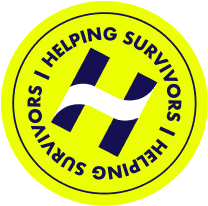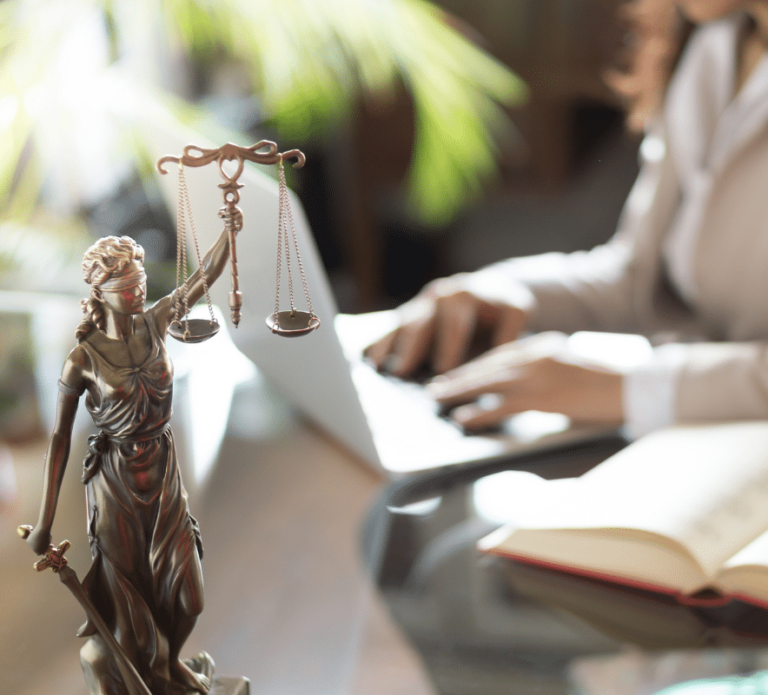UCLA Gynecologist: Dr. James Heaps Convicted

"*" indicates required fields

Author: Kathryn Kosmides
Survivor Advocate
Key Takeaways
- Former gynecologist Dr. James Heaps worked at UCLA for over three decades between 1983 and 2018 — during this time he allegedly sexually abused hundreds of patients.
- His patients, including Julie Wallach, bravely came forward and shared their story with investigators and fought for justice to hold UCLA accountable for their knowledge of the abuse — winning over $700M in settlements against UCLA.
- While time has expired for patients of Dr. James Heaps to file claims, if you have experienced doctor sexual abuse, the bravery of his patients should be inspiration for other survivors to seek justice and healing.
Dr. Heaps - An Overview of His Abuse
While working at the University of California, Los Angeles, Dr. James Heaps treated thousands of patients at the student health center and medical center. However, sexual misconduct allegations against him eventually led to a formal investigation by the university. According to the Los Angeles Times, UCLA allowed Dr. Heaps to keep seeing patients during the probe until it fired him in June 2018. Only then did university officials notify the Medical Board of the abuse claims.
UCLA gynecologist Dr. James Heaps eventually went to trial and was found guilty of several felony counts, including sexual battery by fraud and sexual penetration. Meanwhile, thousands of victims came forward to seek justice for the abuse they endured at the hands of Heaps. UCLA has since paid close to $700 million in settlements for the role the university played in concealing the abuse.
If Heaps or any other doctor or medical professional has sexually abused you, you may be entitled to compensation and other legal remedies. Learn about your rights, the available resources, and your legal options with Helping Survivors.
Who Is Dr. James Heaps?
Former UCLA gynecologist Dr. James Heaps worked at UCLA for over three decades between 1983 and 2018. He attended the Maryland School of Medicine and graduated in 1983. Soon after, he received his medical license to practice in California and began working with the university at the UCLA Student Health Center and UCLA Medical Center.
According to the University of California Board of Regents review, Heaps was a consulting physician at the Arthur Ashe Student Health and Wellness Center between 1983 and 2010 as an intern, resident, and fellow. While there, he served the student population at the university.
Dr. Heaps also had a private practice and was given medical staff privileges at the Ronald Reagan UCLA Medical Center from 1990 to 2014. He was a UCLA Medical School faculty member between 1989 to 2018. UCLA terminated his employment by not renewing his contract in 2018 amid multiple sexual misconduct allegations and a resulting investigation.
- Dr. Heaps – An Overview of His Abuse
- Who Is Dr. James Heaps?
- Dr. James Heaps Convicted On Criminal Charges
- Julie Wallach’s Story: Surviving Dr. James Heap’s Abuse & Helping Prevent Future Harm
- UCLA’s Response to Dr. James Heaps’s Allegations Throughout the Years
- What Victims of Doctor Sexual Assault Should Know About Their Rights and Options
- Want To Speak With A Lawyer
Dr. James Heaps Convicted On Criminal Charges
As reported by the Medical Board of California, the surrender of Dr. Heaps’s license became effective on March 14, 2023, after he was charged with the following:
- Sexual misconduct
- Medical exploitation
- Gross negligence
- Repeated negligent acts
- Excessively utilized diagnostic procedures
- Failure to maintain adequate and accurate medical records
Of 21 total criminal charges, a jury convicted Dr. Heaps of five felony counts, including three sexual battery by fraud counts and two counts of sexual penetration of an unconscious person. However, the jury acquitted him on seven other felony counts. In addition, the jury was unable to reach a unanimous decision on nine counts of various sexual abuse charges. Heaps was sentenced to 11 years in prison by Judge Michael D. Carter.
What Is Sexual Battery?
California law defines sexual battery as a person touching another person’s intimate parts while unlawfully restrained by the accused person or an accomplice. Victims may also be medically incapacitated, disabled, or unconscious. The physical contact must be against the touched person’s will and for sexual arousal, gratification, or abuse.
Sexual battery includes victims who are touched directly or through their clothing or the offender’s clothing. An “intimate part” is defined as all sex organs and the anus, groin, buttocks, and breasts.
What Is Sexual Penetration of an Unconscious Person?
It is also a crime to touch another person’s intimate parts when the victim is unaware of the act. If the abuser fraudulently says the touching serves a professional purpose or is part of their job when it’s not, they are committing sexual assault and battery.
California law also states that any person who commits an act of sexual penetration while the victim is unconscious, asleep, or told the act was professionally necessary is guilty of a punishable crime.
Both sexual battery and sexual penetration of an unconscious person are two common charges against doctors who perpetrate harm against their patients — although definitions of criminal charges may differ between jurisdictions.
Julie Wallach's Story: Surviving Dr. James Heap's Abuse & Helping Prevent Future Harm
Helping Survivors spoke with Julie Wallach, one of the leading plaintiffs in the doctor sexual assault case against Dr. James Heaps. Her courage and persistence enabled hundreds of women to seek justice and healing.
The following is her firsthand experience, in her own words.
“In 1998, Dr. James Heaps, a gynecological oncologist at UCLA sexually assaulted me. He irreparably harmed my body; sent the nurse out of the room to “examine” me; made sexually harassing comments about my facial features and body parts; used unnecessary instruments to “examine” me; touched my inner thighs and forced them open without gloves. There is more but I flash in and out of being able to share about it.”

Julie was asked how she felt after the experience and what she has heard survivors describe after experiencing sexual assault or abuse in a medical setting.
“The tricky part of medical sexual assault is that doctors are perhaps the most trusted humans next to clergy in this country, and I doubted his wrongdoing at first. I trusted that he had to do what he did, even though I felt creeped out, devastated and almost immediately dissociated from the extreme nature of the abuse. I questioned myself and what had just happened, thinking something must be wrong with me, that I caused him to prey on me. This is the same thread that ran in my life when my father abused me, and it is part of a trauma response to deplorable behavior. Predatory behavior is horrendously confusing.”
She continues by talking about how and when she first reported. “Within a short period of time, I reported his predatory actions to the California Medical Board and UCLA. Both disregarded my concerns and were complicit in Heaps abusing hundreds (possibly thousands) of women. Two decades later, other survivors spoke out. I came forward with all of the documentation that I’d filed when I was assaulted. It’s possible that I was the first patient to file a formal complaint against the doctor and UCLA.”
It was not until decades later that Julie’s report started a domino effect as more survivors came forward.
“After decades of healing, I accepted the invitation to be one of the lead plaintiffs in a landmark case against Heaps and UCLA. I had the honor of addressing the California Senate and Judiciary Committee, advocating to lift the statute of limitations for survivors and spoke at press conferences and on news outlets.”
“I am an incest survivor. I spoke out against my father, who molested me throughout my childhood. In 1998, when I was 18 years old, I had flashbacks of what he did to me. I spoke about it with my family; there was a deep lack of support but I continued to speak out and seek trauma-informed help. This ties into being abused by a gynecological oncologist, as I put all of my energy and attention into healing from my father’s predatory behavior only to be assaulted by the doctor after years of dedication to healing the aftereffects of trauma.”
She concluded the interview with Helping Survivors by answering the question: ‘What hopeful message would you give to survivors? How do they seek justice and healing?’ with the following words:
“Healing is deeply personal and unique to every survivor, but the following have been vital to my healing processes that span over three decades:
- Say it aloud. Speak it. You don’t have to shout from the mountaintops unless you’re moved to do that, but if at all possible, talk about the assault with one person whom you trust. Saying the words aloud can feel terrifying and disorienting, but it is empowering and can be the first step to other forms of healing.
- Find a professional or more who can support your healing. Individual talk therapy, EMDR, somatic therapy, fascia/bodywork, massage, dance, writing, painting and other forms of art therapy, finding a hobby that you love, physical activity, rest/sleeping all play a part in my healing. Finding what works is an exploratory adventure that builds on itself and positively affects so many areas of life – beyond the trauma.
- If it moves you, become and advocate and activist. Speak at rallies, volunteer to tell your story, connect with other survivors in groups to share in collective healing.
- Be honest about the abuse. Saying it over and over helped to confirm what happened to me – it is so easy to fall back into self doubt as a trauma survivor. Keep sharing.
In summation, she stated: “It is absolutely possible to live a life beyond the intense anxiety, depression, shame, self-doubt, self-destructive patterns and habits and move into a life of deep self value, honest expression, enjoyable sexuality and authentic, deep empowerment.”
Julie is a public speaker and advocate for survivors of sexual abuse and facilitates one-on-one & group expressive writing workshops. More information on her work can be found here.
UCLA's Response to Dr. James Heaps's Allegations Throughout the Years
Despite multiple complaints against Heaps throughout his time at UCLA, the university initially allowed him to continue practicing medicine and seeing patients. A special committee review chronicles Heaps’s sexual misconduct allegations and the university’s response. The timeline with crucial dates and incidents is as follows:
- 1999: The first patient filed a complaint against Heaps over his exam technique and comments that disturbed and embarrassed her.
- 2014: An employee and a patient file complaints.
- 2015: Another patient raises a complaint.
- 2017: Another employee and another patient file complaints. The hospital’s leadership notified Heaps of the complaint and asked him to take a vacation as they investigated the patient complaint.
- January 2018: The Medical Staff Executive Council decided not to suspend Heaps. After returning from his vacation, the university permitted him to practice while the investigation was pending.
- April 2018: UCLA’s Title IX Office issued an investigative report confirming Heaps engaged in sexual harassment against an employee. The university informed Heaps it would not renew his academic appointment.
- May 2018: The Title IX Office addressed the 2017 patient complaint by stating the complaint was credible but did not confirm the conduct was clinically inappropriate.
- June 2018: UCLA put Heaps on an investigatory leave. Heaps surrendered his UCLA medical staff privileges and retired. UCLA reported Heaps to the Medical Board.
- 2019: Additional complaints are filed by former employees and a patient.
- February 2019: The Board of Regents received a notice of intent to sue Heaps.
- March 2019: A special committee opened a formal review of Heaps and four other physicians.
- June 2019: UCLA announced the special committee and asked for patients to come forward with input.
- November 2019: The Title IX Office issued its final report.
- April 2023: Dr. Heaps is convicted of multiple criminal charges and was sentenced to 11 years in prison.
Because UCLA did not take immediate action after receiving complaints about Heaps, he was allowed to continue practicing medicine and abusing patients. As a result, UCLA has paid $700 million in settlement claims to thousands of women, including a class-action suit against Heaps for sexual misconduct.
Thousands of patients sexually abused by Heaps joined a class-action lawsuit to hold him accountable for his misconduct. The University of California Regents reached a settlement agreement to pay $73 million to victims, setting up a fund to pay victims’ claims. The Regents also agreed to improve procedures to prevent, identify, and report sexual misconduct for patients in the future.
The time to file a claim against Dr. Heaps or collect under this settlement expired in 2021 — however you may still have rights and options.
What Victims of Doctor Sexual Assault Should Know About Their Rights and Options
Doctors who betray their patients’ trust and commit sexually inappropriate often act with little fear of consequences. However, doctor sexual assault victims have rights and options to seek justice for their suffering and cases doctors including Dr. Heaps, Dr. Robert Hadden Dr. Darius Paduch, and Dr. Cheng should empower survivors to come forward.
Examples of Doctor Sexual Assault
Doctor sexual assault can take many forms. Examples include the following:
- Touching a patient’s intimate parts without gloves
- A doctor performing unnecessary acts, such as touching unrelated body parts or causing pain
- Refusing to allow a nurse to stay in the room during your exam
- Pressuring you to remove your clothes when it’s not necessary
- Making sexual or suggestive remarks before, during, or after an exam
Unfortunately, there have been several doctors accused of sexual abuse recently, including the following:
- Dr. Ahi Alan Cheng is accused of sexually assaulting women at New York-Presbyterian Hospital in Queens. He allegedly used powerful drugs to sedate his victims.
- Dr. Darius Paduch is a New York urologist charged with sexually assaulting patients, including minors.
- Dr. Robert Hadden is a New York doctor convicted of committing hundreds of acts of sexual violence against his patients at Columbia University Hospital
If you believe a doctor has sexually abused you, you don’t have to deal with the aftermath alone. You may be entitled to seek justice and compensation.
Helping Survivors can provide resources and support for you and your family. Our team can help you seek medical assistance, understand how to report doctor sexual abuse, connect you with emotional support, and provide information about your legal options. In addition, we can connect you with a compassionate and experienced sexual abuse lawyer who can counsel you regarding your legal options and help you make an informed decision about how to proceed.

Want To Speak With A Lawyer?





